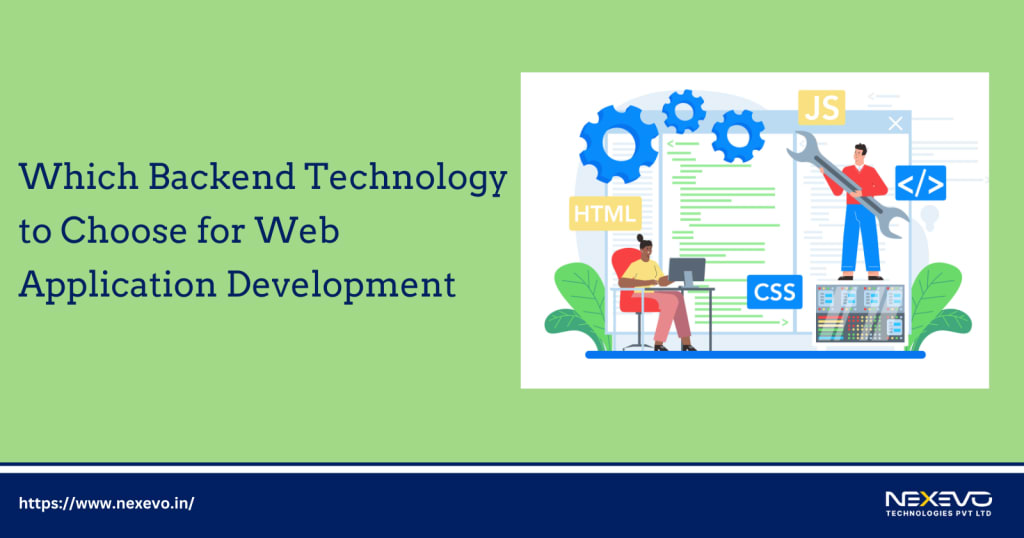Which Backend Technology to Choose for Web Application Development
Comparing Top Backend Technologies to Scale Your Business Effortlessly

Choosing the right technology for backend web application development is crucial for the success of your project. With numerous options available, each with its strengths and weaknesses, making an informed decision can be challenging. This article explores some of the most popular backend technologies to help you decide which one is the best fit for your web application development needs.
1. Node.js
Overview:
Node.js is a JavaScript runtime built on Chrome's V8 engine. It allows developers to use JavaScript for server-side scripting, producing dynamic web page content before the page is sent to the user's web browser.
Pros:
Fast Performance: Non-blocking I/O and an event-driven architecture make Node.js highly efficient.
Single Language: Use JavaScript for both frontend and backend development, simplifying the development process.
Large Ecosystem: A vast number of libraries and modules available through npm (Node Package Manager).
Cons:
Callback Hell: Heavy reliance on callbacks can lead to complex and hard-to-maintain code.
Maturity: Compared to other backend technologies, some libraries and tools may not be as mature.
2. Django (Python)
Overview:
Django is a high-level Python web framework that encourages rapid development and clean, pragmatic design. It is known for its "batteries-included" philosophy, offering numerous features out of the box.
Pros:
Rapid Development: Built-in features such as an admin panel, authentication, and an ORM (Object-Relational Mapping) accelerate development.
Scalability: Django's design promotes scalability and can handle high traffic loads.
Security: Strong emphasis on security, with protection against common attacks like SQL injection and cross-site scripting.
Cons:
Monolithic: Django can be monolithic, making it challenging to integrate with other technologies.
Learning Curve: While Python is easy to learn, mastering Django’s extensive features may take time.
3. Ruby on Rails
Overview:
Ruby on Rails, often simply called Rails, is a server-side web application framework written in Ruby. It follows the convention over configuration (CoC) and don't repeat yourself (DRY) principles.
Pros:
Productivity: Rails emphasizes convention over configuration, allowing developers to get started quickly.
Community and Gems: A robust community and a wealth of gems (libraries) simplify common tasks.
Flexibility: Easily adaptable for a wide range of applications, from simple websites to complex systems.
Cons:
Performance: Ruby and Rails may not be as performant as some other technologies for highly concurrent systems.
Scalability: Scaling Rails applications can be challenging, particularly as they grow more complex.
4. Laravel (PHP)
Overview:
Laravel is a PHP framework that provides an elegant syntax and powerful tools for web application development. It aims to make the development process enjoyable and fulfilling.
Pros:
Elegant Syntax: Laravel’s syntax is clean and easy to understand, promoting good coding practices.
Built-In Tools: Features like Blade templating, Eloquent ORM, and robust authentication system out of the box.
Community and Resources: A strong community and extensive documentation and tutorials.
Cons:
Performance: PHP applications may not be as performant as those built with other technologies like Node.js or Go.
Shared Hosting Limitations: PHP is often associated with shared hosting environments, which can limit performance and scalability.
5. ASP.NET Core (C#)
Overview:
ASP.NET Core is a cross-platform, high-performance framework for building modern, cloud-based, internet-connected applications. It’s an open-source framework developed by Microsoft.
Pros:
Performance: ASP.NET Core is known for its high performance and scalability.
Cross-Platform: Runs on Windows, macOS, and Linux, providing flexibility in deployment.
Robust Framework: Extensive built-in features for authentication, authorization, and data access.
Cons:
Complexity: ASP.NET Core can be complex and may have a steep learning curve for beginners.
Ecosystem: While improving, the open-source ecosystem is not as large as those for JavaScript or Python.
6. Go (Golang)
Overview:
Go, also known as Golang, is a statically typed, compiled programming language designed for simplicity and performance. It’s known for its concurrency support and efficiency.
Pros:
Performance: Compiled to machine code, Go programs run extremely fast.
Concurrency: Built-in support for concurrent programming with goroutines.
Simplicity: Go’s simplicity and ease of learning make it a great choice for developers of all levels.
Cons:
Maturity: While growing, the ecosystem is not as mature as those of more established languages.
Verbose Error Handling: Error handling in Go can be verbose and repetitive.
Conclusion
Choosing the right backend technology depends on various factors, including the specific needs of your project, your team's expertise, and long-term maintenance considerations. Node.js offers fast performance and a unified language for full-stack development. Django and Ruby on Rails provide rapid development capabilities with strong community support. Laravel offers an elegant syntax and comprehensive features for PHP developers. ASP.NET Core delivers high performance and scalability with cross-platform support. Go excels in performance and concurrency but has a smaller ecosystem.
Partnering with a web application development company in Bangalore can help you navigate these choices, ensuring you select the best technology for your backend needs. The right decision can significantly impact your project's success, leading to efficient development, scalable solutions, and satisfied users.
About the Creator
Varna George
As a developer, I am passionate about coding and constantly strive to enhance my skills and knowledge in the ever-evolving tech landscape.
Enjoyed the story? Support the Creator.
Subscribe for free to receive all their stories in your feed. You could also pledge your support or give them a one-off tip, letting them know you appreciate their work.





Comments
There are no comments for this story
Be the first to respond and start the conversation.